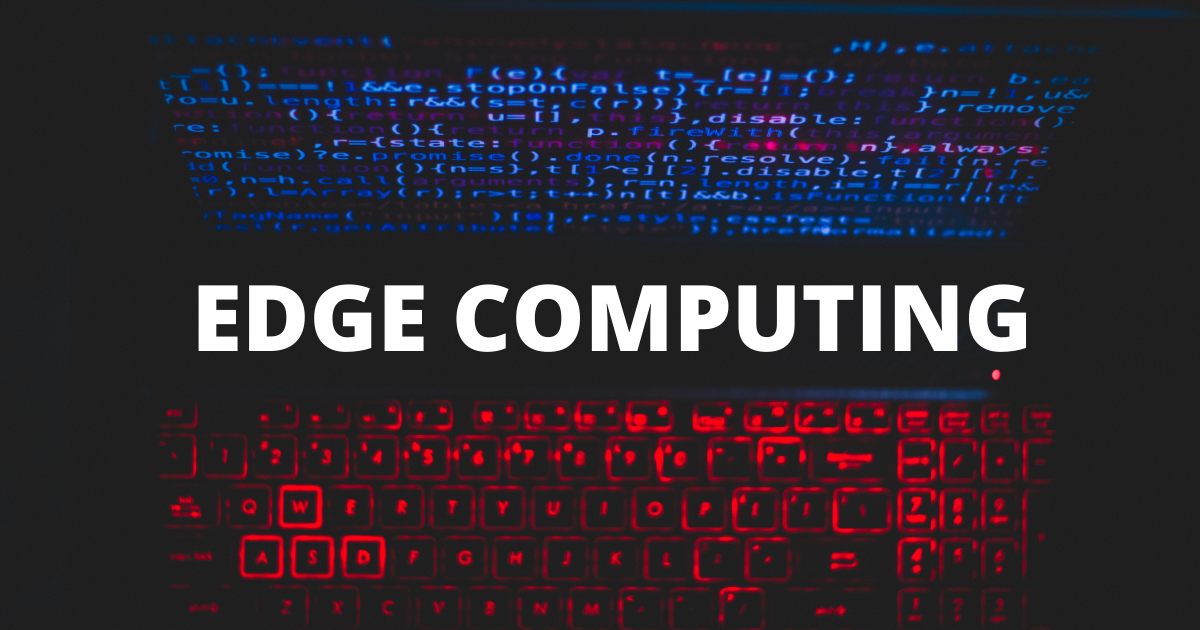What is edge computing? Edge Computing is a distributed computing model in which processing and computation are performed mostly on private device nodes such as smart devices or edge devices. This is in contrary to processing in a centralized cloud environment or data centers. It helps in providing server resources, data analysis, and artificial intelligence to data collection sources and cyber-physical sources like actuators and smart sensors. Edge computing is a way to simplify the movement of traffic from IoT devices and use real-time local data analysis.
To begin with, edge computing joins computation and data storage closer to the devices where it is stored, instead of relying on a central location which is miles away. This is done so that data do not suffer dormancy issues that affect an application’s work. Adding on to it, companies can save money by having the processing done locally. Hence, this reduces the amount of data that needs to be processed in a unified or cloud-enabled location.
Due to the extensive growth of IoT devices, which connect to the internet, edge computing was born. The devices are always receiving information from the cloud or delivering data back to the cloud. Therefore, many IoT devices generate vast amounts of data during the course of their actions.
Edge Computing & Internet of Things
Data handling, processing, and delivery from millions of devices across the world is changing due to Edge Computing. The immense growth of IoT devices along with new applications that need real-time computing power is continuing to drive Edge Computing systems.
Faster networking technologies, for example, 5G wireless, are allowing for edge computing systems to speed up the creation or support of real-time applications. For instance, video processing and analytics, self-driven cars, artificial intelligence, and robotics.
Think about an internet-connected camera that does a live video from a remote office. A single device producing data can share it across a network very easily. But, problems arise when the number of devices sharing data at the same time grows. Instead of one camera sharing live video, multiply that by hundreds or more devices. The quality will suffer due to dormancy. In addition to that, the costs of bandwidth will be huge.
Edge Computing services help in solving this problem by being a local source of processing and storage for many of these systems. An edge system, for example, processes data from an edge device. Then, in turn, it sends only the required data back through the cloud, reducing bandwidth needs. It can also send data back to the edge device in case of real-time applications.
These edge devices include many different things, like an IoT sensor, an employee’s tablet, their latest smartwatch, the security camera, or even an IoT microwave oven in the office cafeteria. Edge gateway itself becomes an edge device within an edge-computing infrastructure.
Conclusion
IoT takes the help of edge computing and hence, intelligence moves to the edge. There are various cases where high-speed data, the main component of management, power issues, analytics, and real-time need, helps in processing data with edge computing in IoT.

All you need to know about IoT
| Introduction to IoT | Career Options after IoT |
| IoT in Business Growth | How IoT works? |
| Future of IoT | Benefits of IoT |
| Disadvantages of IoT | Salary After IoT Course |
Learn IoT
| Top 7 IoT University/ Colleges in India | Top 7 Training Institutes of IoT |
| Top 7 Online IoT Training Programs | Top 7 Certification Courses of IoT |
Learn IoT with WAC
Other Skills in Demand
| Artificial Intelligence | Data Science |
| Digital Marketing | Business Analytics |
| Big Data | Internet of Things |
| Python Programming | Robotics & Embedded System |
| Android App Development | Machine Learning |

